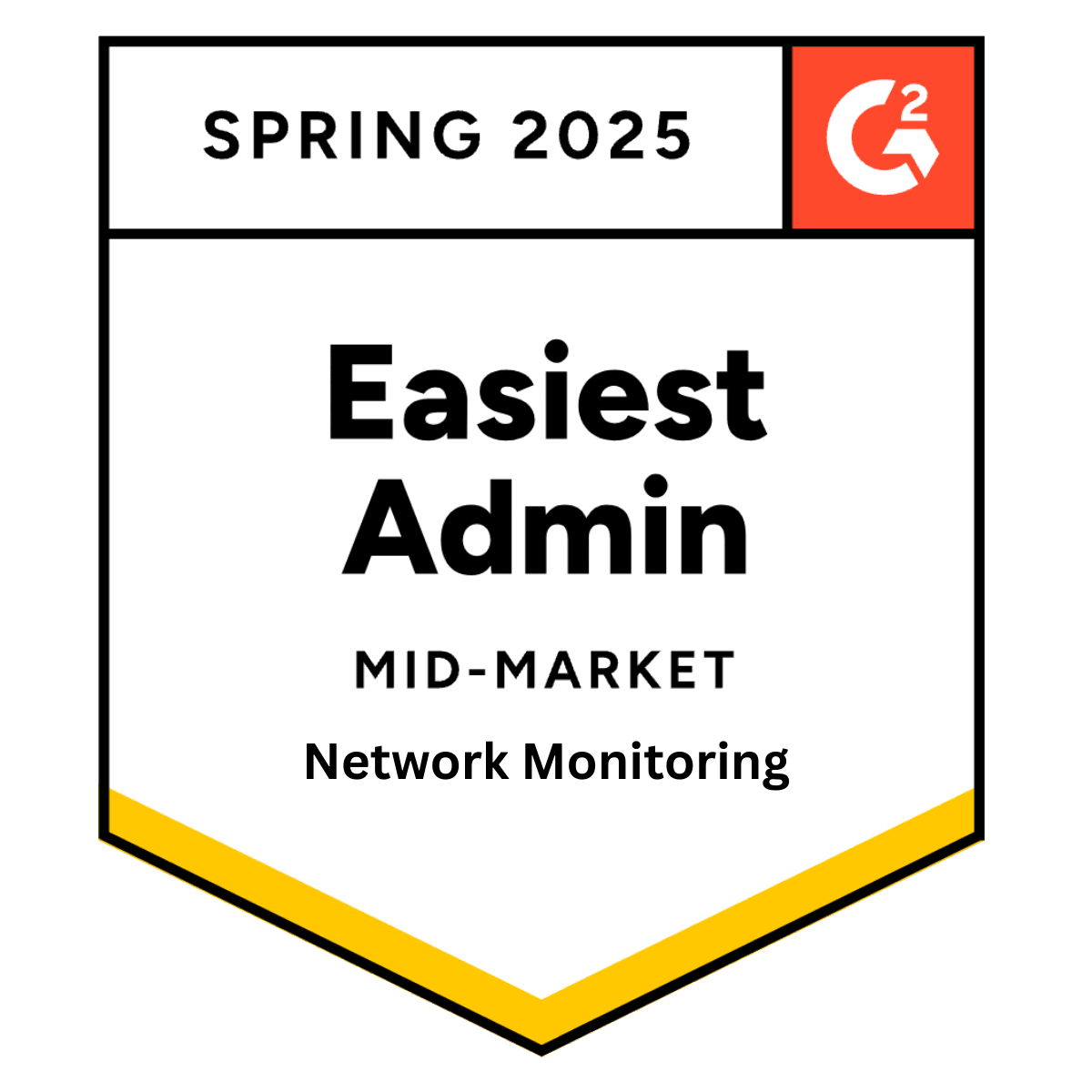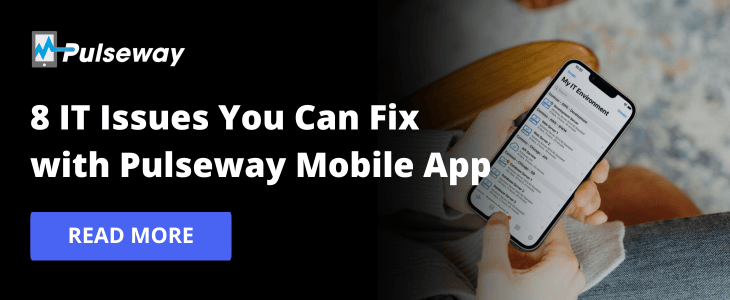
Gain Higher Education IT Efficiency Through Mobile Remote Monitoring and Management (RMM)
Thursday 26 May, 2016
You would be hard pressed to find an IT environment tougher to manage than Higher Education. Student turnover is constant, the network by definition is campus-wide with devices spread all over, and you need to support the business office, faculty, administration and often an array of complex research facilities.
Did we mention budgets are tight and competition for students intense? In the case of competition, online schools have grown immensely in recent years, and private Colleges and Universities face stiffer competition from Public Schools who have been advancing their offerings and quality.
To survive in this game, IT has to be highly efficient. This is for two reasons. You need to get the IT work done and keep all your systems running smoothly, and you need the time and money to implement innovative solutions. You know the other schools in your area are.
The key to efficiency is to stop doing the things you don’t need to do. That means using a tool that can take care of your IT admin grunt work. The answer is Remote Monitoring and Management (RMM). Even better is if you can monitor and manage all your systems through a mobile device – that makes it truly remote.
An RMM takes care of essential IT admin functions, and completes many of these tasks in an automated fashion. In some cases, IT uses an RMM to take direct action when there is a problem, and can do the fix quickly and without needing to be physically on site.
How does the Pulseway RMM help?

With Pulseway’s Mobile RMM, a form of Real-Time IT System Management Software, you can:
- Provide top-tier support to your employees through 100% visibility into your system and the ability to control these devices.
- With this completely mobile tool you can monitor Windows, Mac and Linux systems along with a vast array of others. You can track items including logged in users, system status and performance, handle Windows Updates, and monitor the network.
- This monitoring means that an admin with nothing more than a smart phone will be the first to know about a problem, and can quickly fix it. With Pulseway, you can lock, logoff, restart, shut down, power off, suspend or hibernate a remote machine. For deeper access, you can use Remote Desktop to fully control a stricken machine.
The benefits are immense. Because problems are spotted early, they are ameliorated before they cause real damage.
With the deep real-time monitoring, you know who is doing what, and how the entire IT infrastructure is operating.
And you have complete control to diagnose and fix any of an array of problems. Because this is done through an RMM, the admin never has to waste time going from one machine to another for repair or software updates. And because it is mobile, the admin can do his work from wherever he or she happens to be. In fact we recently wrote a blog covering some of the coolest and oddest places technicians have fixed problems using Pulseway.
Mini Case Study: Highland Community College

Highland is the oldest College in the state of Kansas. But that doesn’t mean its technology is old. Quite the contrary. Highland now uses Pulseway to manage its machines through smartphones and tablets. Key things the school looks for are CPU and memory use metrics, logged in/active users, and for general monitoring and visibility.
”From my smartphone the Pulseway solution enables me to log out active users, check and run Windows updates and restart all machines. Overall there has been a significant improvement in the general monitoring,” said Joshua Berry, Network Administrator/Highland CC
Mini Case Study: University of Auckland Business School

University of Auckland Business School is likewise impressed. Much of the school’s infrastructure is managed by Eugene Chan, Deputy Director Digital Services. Chan’s team has to manage over 150 physical and virtual servers, along with hundreds of virtual desktops—all this to meet the needs of 600 staffers and some 12,000 students.
In the past when there was a problem, IT staffers had to go on-site with their laptops to solve the issue. That is no longer the case.
'With Pulseway,' says Chan, 'I can have a quick look at server performance first thing in the morning. At the University, thousands of people rely on our servers and virtual desktops for their day-to-day studies, projects and management. They want things to run when they log-on. Just being able to see if there are any issues before the work day begins - and to be able to address them on the fly - has been a huge bonus for us. We are a service-orientated team here and we like to keep the users happy. Pulseway makes it that much easier.'
Pulseway makes it so end users don’t usually even know they have a problem – it is fixed before they see any signs such as a system slowdown. “Now we manage most of our everyday tasks from our smartphones. The best part is that Pulseway alerts us to any issues before users even notice any slow-downs. User satisfaction has gone up, our workload has gone down and the total price tag has been almost negligible,' Chan said.
Time and Money for Innovation
The less you spend on core IT functions, the more you can gaze at your crystal ball and find innovative technologies that will give your school a competitive advantage and a bright future. Some of this could be a greater move to virtual servers, private clouds, virtual desktops, and cloud services. And making IT efficient should give you more leeway with your budget.
Other areas of innovation may be specific to your school. For instance, if some of your departments do heavy modelling and simulation, you don’t just need good workstations, but a way to offload these tasks that can take hours and days to another system for processing. One answer is a cluster of servers. You can also look at cloud services that do the same thing -- just make sure the WAN is up to speed to transfer huge amounts of data.
Other schools are looking at Customer Relationship Management (CRM) to make sure there are tight relations with alumni and other donors, as well as applicants, students and business partners.
Adaptive Learning is another hot area. Here the system tracks how a student is performing, reacting to what they are learning, or their preferences -- and adapts the content accordingly.
The View from EDUCAUSE
EDUCAUSE is a non-profit organization devoted to improving Higher Education. The group recently surveyed IT to find their top priorities for 2016. Here are the top ten:
- Information security
- Optimizing educational technology
- Student success technologies
- IT workforce hiring and retention
- Institutional data management
- IT funding models
- Business intelligence and analytics
- Enterprise application integrations
- IT organizational development
- E-Learning and online education
What does all this mean? You need to stop doing things the old way, and doing it all yourself. Instead look for ways to make your IT group more efficient and seek out partners that can take over areas of your IT.
'Higher education IT organizations are divesting themselves of technologies that can be sourced elsewhere and of practices that have become inefficient and are reinvesting to develop the necessary capabilities and resources to use information technology to achieve competitive institutional differentiation in student success, affordability, and teaching and research excellence,' the group concluded.
Share this post
Related Posts
Join the Ranks of Satisfied Customers and Experience the Pulseway Difference Today.








